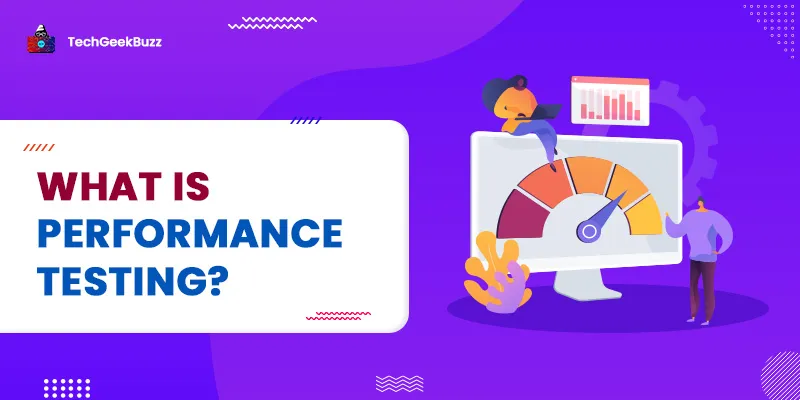Being an integral part of the software development life cycle (SDLC), software testing ensures that a software product under development is free from defects and meets high-quality standards. Also, it helps to make sure that the software product conforms to the requirements specified by all the stakeholders, including end-users, managers, sponsors, product owners, and investors.
To ensure proper and accurate testing, various software testing techniques are available out there. But what exactly is a software testing technique?
A software testing technique is a structured approach for carrying out testing on the software product under development against functional and non-functional requirements. The aim of a software testing technique is to detect defects or bugs in a software product.
Each software testing technique is intended to find a specific type of defect or bug . For instance, testing techniques intended to find structural defects cannot find logical defects in the software product.
Through this article, we will introduce you to various types of software testing techniques.
Types of Software Testing Techniques
Software testing techniques are broadly categorized into two types, namely static testing and dynamic testing. Let us discuss each of them in detail below.
1. Static Testing
The static testing technique involves testing the software product under development without executing its source code. Software testers perform static testing in the early stages of development since it becomes easier for them to identify the cause of errors and fix them quickly.
In static testing, software testers perform manual automated reviews of various work documents to identify defects or errors without executing the source code of the software product. These work documents include:
- Requirement Specification
- Design Document
- Source Code
- Test Plans
- Test Cases
- User Document
- Test Scripts
- Web Page Content
Since this type of testing technique does not involve code execution, we refer to it as non-execution testing. In addition, static testing is sometimes called verification testing.
Advantages of Static Testing
The following are the remarkable benefits of static testing:
- Early detection and elimination of errors.
- It significantly reduces the cost of fixing defects in the later stages by identifying and correcting them in the early stages of development.
- Improves the overall quality of the software product.
- It is possible to use automated tools for static testing, which make it easier and quicker for testers to review work documents.
- Identifies the exact location of a defect or bug.
- Dynamic testing becomes more efficient since the source code of the software product gets clean after static testing.
Disadvantages of Static Testing
Here are some significant drawbacks of static testing:
- When carried out manually, static testing is a time-consuming testing technique.
- Many automated tools support limited programming languages.
2. Dynamic Testing
The dynamic testing technique involves testing the software product for its dynamic behavior by executing the source code. In other words, dynamic testing tests the software product for its functional behavior, memory or CPU usage, and overall performance.
Software testers perform dynamic testing with an aim to test the software product with dynamic inputs. Among these inputs, some may conform to the requirements while others may not.
Since dynamic testing involves code execution, we refer to it as Execution testing. Sometimes, it is also called validation testing.
The primary idea behind the dynamic testing technique is that it tests the software product with input and compares the actual output with the expected output.
Advantages of Dynamic Testing
- Dynamic testing validates the software product for its functionality.
- It uncovers defects that static testing cannot.
- It is capable of identifying more bugs than static testing.
- Dynamic testing can identify the weak areas in the runtime environment.
Disadvantages of Dynamic Testing
- Dynamic testing requires highly skilled professionals.
- It is more expensive than static testing.
- It is time-consuming and requires a lot of resources.
Differences Between Static and Dynamic Testing Techniques
The following table highlights all the significant differences between static and dynamic testing techniques:
| Static Testing | Dynamic Testing |
| Testers perform static testing in the early stages of development. | Dynamic testing takes place in the later stages of development. |
| It does not involve code execution. | It involves code execution. |
| This type of testing prevents defects. | This type of testing identifies and fixes defects. |
| Static testing takes place before code deployment. | Dynamic testing occurs after code development. |
| It involves various activities, such as code review, inspection, and walkthroughs. | It involves functional and non-functional testing methods. |
| Static testing involves the verification process. | Dynamic testing involves the validation process. |
| It is less expensive. | It is more expensive than static testing. |
Types of Static Testing Technique
In general, there are two different types of static testing techniques, namely reviews and static analysis. Let us shed light on these two static testing techniques below.
1. Reviews
This type of technique involves reviewing the artifacts or work documents, such as source code, test data, test cases, etc. A review can vary from informal to formal. There are four different types of Reviews, as follows:
- Peer Reviews: Peer reviews are information reviews and do not require any formal setup. In peer reviews, two developers or testers review each other's artifacts, such as the source code or test cases.
- Walkthroughs: In walkthroughs, a person, specifically called the author, who is responsible for developing the artifacts, such as source code, test case, or test document, walks the stakeholders through those artifacts with the intent to get feedback and check the logic behind it. In simple terms, a walkthrough is an informal meeting where the author describes all their work and receives feedback.
- Technical Reviews: A technical review is another type of review technique that focuses on examining the software product’s technical aspects for identifying defects in the early stages of development. It can vary from informal to completely formal. Moreover, architects or chief designers are responsible for carrying out technical reviews.
- Inspection: Inspection is a formal type of review. It is a rigorous and in-depth review to identify problems and their origins. This type of static testing technique improves the reliability, availability, and maintainability of the software product under development since it finds the point of origin of problems. In addition, it involves three to eight members who have different roles, such as moderator, author, reader, inspector, and recorder.
2. Static Analysis
Static analysis is another type of static testing technique. It involves a set of methods for analyzing the software product's source code to determine whether it functions correctly. Though static analysis does not execute the source code, it reveals a lot of information, such as syntax correctness, data and control flow, type of model used, etc. The following are the popular methods of static analysis:
- Control Analysis: This technique of static analysis focuses on examining the control used in a calling structure. A calling structure can be a subroutine, method, function, or process. Moreover, it involves control flow analysis, which verifies the sequence in which instructions get executed. It is helpful in detecting defects, such as dead code and code that is never used under any condition.
- Data Analysis: This technique ensures that data defined is used correctly and proper operations are applied to data structures. Furthermore, the data flow analysis verifies variable definition and content. Using data flow analysis, you can detect defects, such as variable definition that has never been used in the source code.
- Fault/Failure Analysis: The fault/failure analysis determines the fault (incorrect component) and the failure (incorrect behavior of the component) of the software product.
Types of Dynamic Testing Techniques
There are two types of dynamic testing techniques, namely white-box testing and black-box testing. Let us now discuss each of these techniques below.
1. White-Box Testing
White-box testing involves testing the internal structure, design, and source code of the software product to check the flow of input-output. The primary purpose of white-box testing is to improve the usability, design, and security of the software product.
Since the source code is visible to testers in white-box testing, we also refer to it as open box testing, glass box testing, transparent box testing, and code-based testing.
White-box testing tests the software product’s source code for the following:
- Internals security loopholes
- Poorly structured paths or broken paths
- Conditional loops’ functionality
- Performance of each statement, object, and function separately
The following are the various techniques of white-box testing
- Statement Coverage: The primary purpose of this testing technique is to traverse all the statements of the source code at least once. As a result, this testing technique ensures that each line of the source code is tested.
- Branch Coverage: The aim of branch coverage is to traverse each branch at least once from all the decision points.
- Condition Coverage: This testing technique covers all the conditions included in the source code.
- Loop Testing: This testing technique traverses various types of loops, such as simple loops, nested loops, and concatenated loops, in the source code at least once.
2. Black-Box Testing
Black-box testing is completely the opposite of white-box testing. It involves testing the software product’s functionality without knowing its internal code structure, paths, and implementation details. In black-box testing, a tester selects a module of the software product, feeds input, and checks whether it is producing the expected results or not.
The following are the different types of techniques to perform black-box testing:
- Equivalence Partitioning: This technique involves dividing the input data into partitions of valid and invalid values. After that, testers choose any one value from a single partition for testing and assume that all other values in that partition behave the same way.
- Boundary Value Analysis: This type of technique tests boundary values. Boundary values are those that contain the upper and lower limit of a variable. Testers check whether the software product produces the correct output or not with boundary values.
- Decision Tables: As its name suggests, this technique is a system approach, which involves different input combinations and their respective output values in a tabular format.
- State Transition: This technique captures the behavior of the software product when testers provide different input values to the same function.
- Error Guessing: There is no specific way to test the software product in the error guessing technique. It entirely depends on the experience of testers. They leverage their experiences to identify problematic areas in the software product.
- Use-case Technique: This technique identifies the test cases that execute the software product as a whole.
- Exploratory Testing: In exploratory testing, testers carry out test design and execution simultaneously. There is no need to document the test design steps. The primary purpose of this type of testing technique is to have maximum execution coverage with minimal planning.
Conclusion
Here we reach the end of our discussion about different types of software testing techniques. Broadly, there are two major software testing techniques, namely static and dynamic. Static testing identifies bugs without code execution, while dynamic testing involves code execution for detecting defects.
Software testing techniques allow you to create better test cases and detect bugs quickly. Each testing technique mentioned above has the goal of identifying specific defects or bugs.
People are also reading:



![What is Waterfall Model? [Phases, Pros, & Cons]](/media/new_post_images/Waterfall_Model.webp)

Leave a Comment on this Post